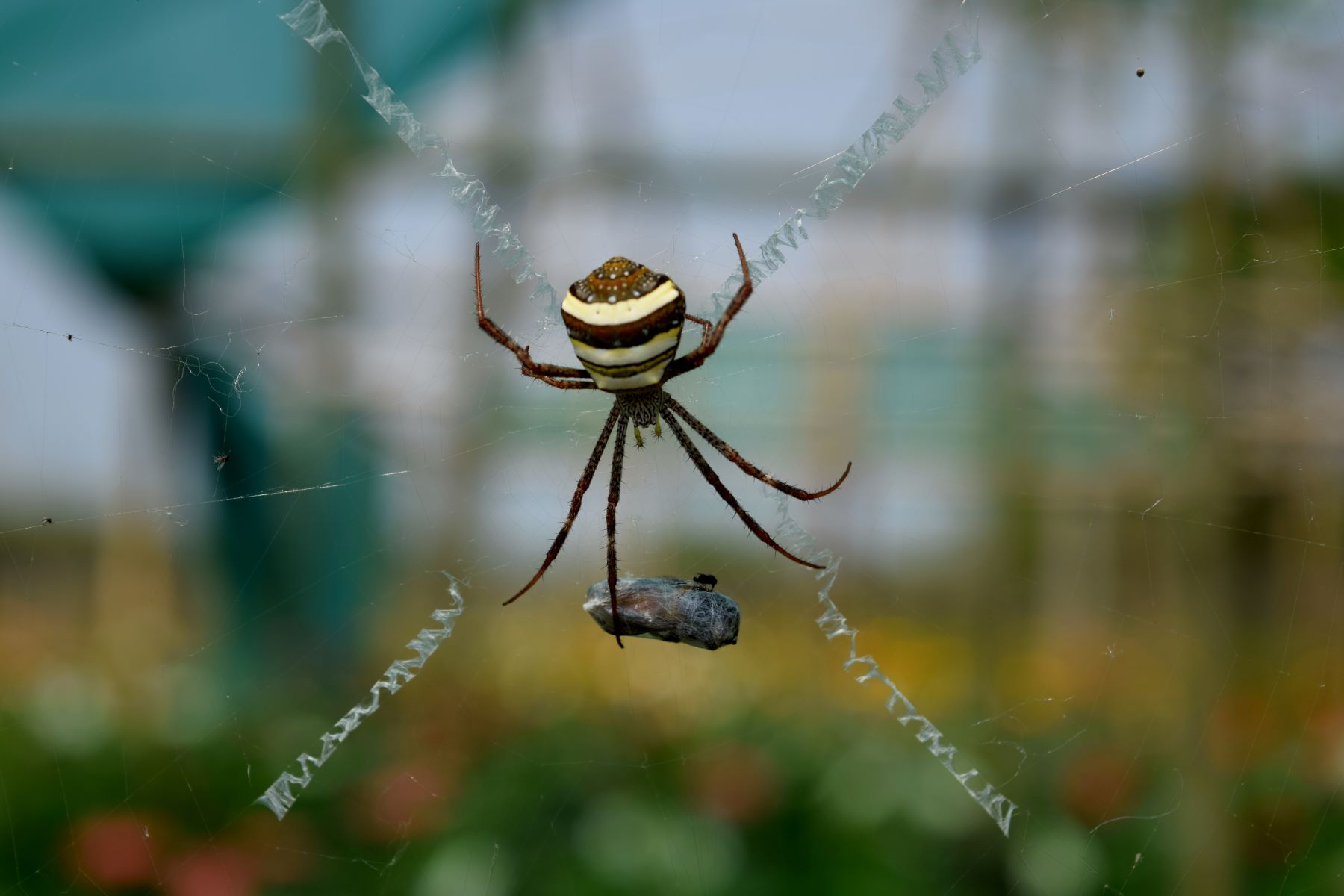
The Banded Orb-weaving Spider, scientifically known as Argiope trifasciata, is a fascinating arachnid known for its striking appearance and intricate web-building skills. Found in various regions around the world, these spiders have captured the attention of scientists and nature enthusiasts alike. In this article, we will delve into the intriguing world of the Banded Orb-weaving Spider and discover 16 mind-blowing facts that will leave you in awe. From their unique color patterns to their intricate mating rituals, these spiders have some truly amazing characteristics. So, if you’re ready to expand your knowledge about these remarkable creatures, keep reading!
Key Takeaways:
- The Banded Orb-weaving Spider is a fascinating architect, creating intricate webs to catch prey and exhibiting striking coloration.
- These spiders have unique behaviors, from sexual cannibalism to producing strong silk, making them a captivating subject for researchers and nature enthusiasts.
The Banded Orb-weaving Spider is a master architect.
This remarkable spider species, scientifically known as Argiope trifasciata, constructs elaborate orb-shaped webs that are meticulously designed to catch prey.
They are found in various parts of the world.
Banded Orb-weaving Spiders are native to regions of North America, South America, Africa, Asia, and Australia.
Their coloration and markings are striking.
Featuring vibrant yellow, black, and white bands, these spiders are visually captivating.
Female Banded Orb-weaving Spiders are significantly larger than males.
The females can grow up to two inches in length, while males reach about half that size.
Their diet primarily consists of insects.
These spiders feed on a variety of insects, including flies, moths, beetles, and grasshoppers.
Banded Orb-weaving Spiders are venomous.
Like many spider species, they possess venom to immobilize and eventually digest their prey.
Their webs are incredibly strong.
The silk threads they use to construct their webs are known to be one of the strongest natural materials, pound for pound.
They exhibit sexual cannibalism.
During mating, the female may consume the male, providing her with much-needed nutrients for egg development.
Their webs are equipped with a signature zigzag pattern.
This zigzag pattern, commonly referred to as a “stabilimentum,” is believed to play a role in attracting prey and deterring larger animals from accidentally destroying the web.
They are nocturnal hunters.
Banded Orb-weaving Spiders are most active during the nighttime, using their exceptional vision to detect movement in their webs.
Their populations are affected by environmental factors.
Habitat destruction and pesticide use have led to a decline in some populations of Banded Orb-weaving Spiders.
They undergo molting to grow.
As they develop and grow, these spiders shed their exoskeletons in a process called molting.
Banded Orb-weaving Spiders have fascinating courtship rituals.
Male spiders perform elaborate mating dances and vibrations on the female’s web to signal their interest and avoid being mistaken for prey.
They have a unique way of trapping prey.
When an insect lands on their web, Banded Orb-weaving Spiders quickly rush towards it, using their strong legs to immobilize and wrap it up in silk before injecting venom.
They produce multiple egg sacs.
Each egg sac contains hundreds of eggs, and a female Banded Orb-weaving Spider can produce several sacs during her lifetime.
These spiders have a relatively short lifespan.
On average, Banded Orb-weaving Spiders live for only a year or two.
Conclusion
In conclusion, the banded orb-weaving spider is a fascinating and unique arachnid. Its vibrant coloration, intricate web designs, and clever hunting techniques make it a truly remarkable creature. From its ability to prey on other spiders to its impressive silk production, this spider has captured the attention of researchers and nature enthusiasts alike.As we continue to explore the wonders of the natural world, the banded orb-weaving spider serves as a reminder of the incredible diversity and complexity found in the animal kingdom. So, the next time you encounter a spider in the wild, take a moment to appreciate the remarkable adaptations and skills that these remarkable creatures possess.
FAQs
Q: What is the banded orb-weaving spider?
A: The banded orb-weaving spider, scientifically known as Argiope trifasciata, is a species of spider known for its distinct banded pattern on its abdomen. It belongs to the family Araneidae and is found in various parts of North America.
Q: Where can I find the banded orb-weaving spider?
A: The banded orb-weaving spider is commonly found in meadows, fields, and gardens throughout North America. They are most active during the warm months and can be spotted in their intricate orb-shaped webs.
Q: What do banded orb-weaving spiders eat?
A: Banded orb-weaving spiders primarily feed on flying insects that get trapped in their webs. They are known to consume a variety of prey, including butterflies, moths, grasshoppers, and flies.
Q: Are banded orb-weaving spiders venomous?
A: Yes, banded orb-weaving spiders are venomous. However, their venom is not considered harmful to humans. These spiders typically use their venom to immobilize their prey.
Q: How do banded orb-weaving spiders reproduce?
A: The reproduction process of banded orb-weaving spiders involves a complex courtship ritual. The male will approach the female cautiously and use vibrations and pheromones to signal his intentions. If the female accepts, mating will occur, and the female will lay eggs in a protective sac.
Q: Are banded orb-weaving spiders beneficial or harmful to the environment?
A: Banded orb-weaving spiders play a crucial role in controlling insect populations, making them beneficial to the environment. By capturing and consuming various insects, they help maintain a balance in ecosystems and reduce the population of pests.
Was this page helpful?
Our commitment to delivering trustworthy and engaging content is at the heart of what we do. Each fact on our site is contributed by real users like you, bringing a wealth of diverse insights and information. To ensure the highest standards of accuracy and reliability, our dedicated editors meticulously review each submission. This process guarantees that the facts we share are not only fascinating but also credible. Trust in our commitment to quality and authenticity as you explore and learn with us.
